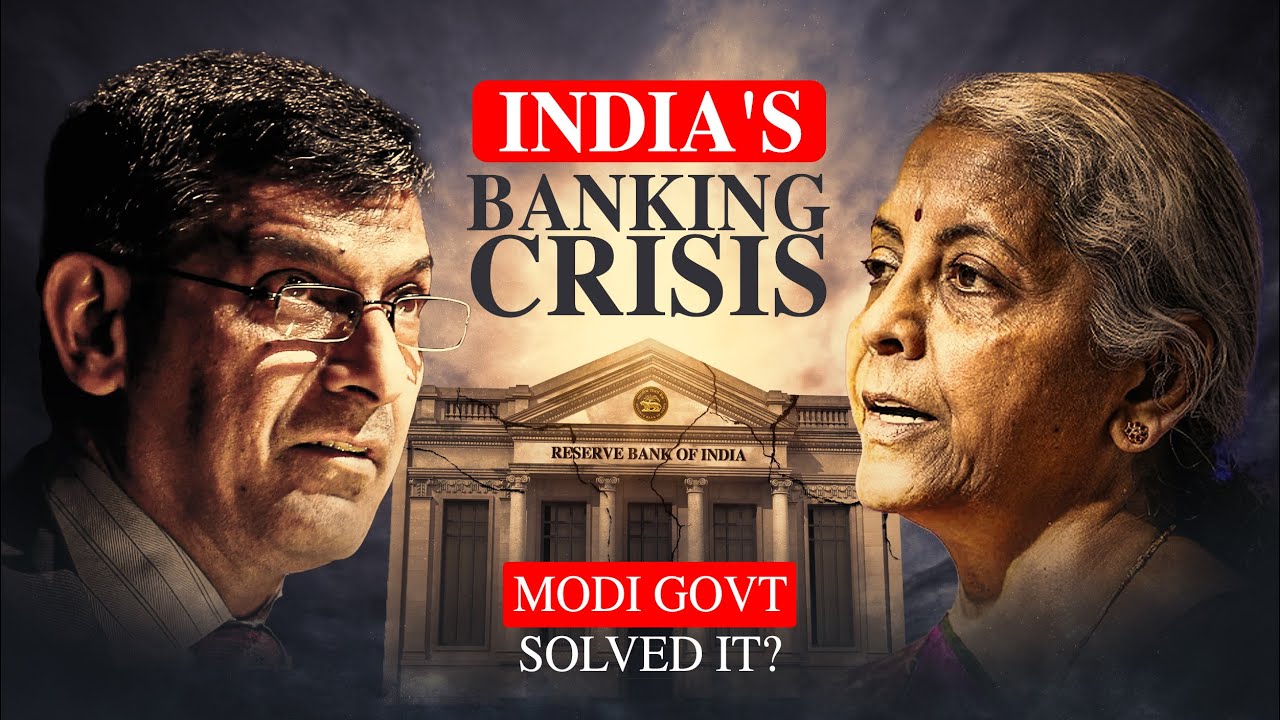Banks See Worst Deposit Crunch in 20 Years | Economy | GS 3 | UPSC CSE | StudyIQ IAS | IPS | IFS
Summary
TLDRThe video script discusses the financial challenges faced by Indian banks in the last financial year 2023-24, highlighting the worst bank deposit crunch in the past 20 years. It explains the concept of bank deposit crunch, where people are not depositing money in banks, and its implications on the economy. The script also touches upon the competition among banks to attract customers' deposits and the shift of public investment towards mutual funds and real estate. It concludes with the impact of these financial trends on bank credit, interest rates, and overall economic growth.
Takeaways
- 📈 The financial year 2023-24 saw the worst bank deposit crunch in the last 20 years, impacting the banking sector significantly.
- 🏦 Banks are facing challenges as the public is becoming more discerning and shifting their savings from traditional bank deposits to other investment avenues.
- 💡 The script mentions that banks are trying to attract customers by offering higher interest rates on savings accounts, indicating increased competition in the banking sector.
- 📉 There is a notable trend of the public investing in mutual funds, real estate, and equity markets, which is affecting the inflow of deposits into banks.
- 🔢 The credit-deposit ratio has reached its highest level since 2005, with 80% of deposits being used for loans, indicating a potential strain on banks' liquidity.
- 📊 The growth of deposits has increased by 13.5%, amounting to 204 lakh crore rupees, while credit (loans) has grown more than the growth of deposits.
- 🏘️ Non-food credit, which includes loans for sectors like agriculture and industry, has grown by 20.2%, showing a shift in the types of loans being sought.
- 🏛️ Banks are required to maintain certain liquidity ratios, including the Statutory Liquidity Ratio (SLR) and Cash Reserve Ratio (CRR), which affects the amount they can lend.
- 📉 The decrease in deposits is leading to a potential increase in interest rates, as banks have less supply to lend and are cautious about their lending practices.
- 🏢 The banking system is facing a liquidity crunch, with some banks reportedly withdrawing investments from government bonds to maintain their loan disbursal capacity.
- 📰 There are reports of banks facing difficulties due to the shift of the public's preference towards equity markets and mutual funds over traditional savings accounts.
Q & A
What significant event in the banking sector was observed in the financial year 2023-24?
-The financial year 2023-24 witnessed the worst bank deposit crunch in the last 20 years, which is a significant event in the banking sector.
What does the term 'bank deposit crunch' imply?
-A 'bank deposit crunch' implies a situation where people are not depositing money in banks, which is a critical issue affecting the overall economy.
Why is the public shifting away from traditional bank deposits?
-The public is shifting away from traditional bank deposits due to the perception that they can get higher returns from other investment avenues such as the stock market, mutual funds, and real estate.
What is the impact of the deposit crunch on banks' ability to lend?
-The deposit crunch affects banks' ability to lend as they have less money to give out in loans, which can lead to a decrease in economic activity.
What was the credit-deposit ratio reported by the Reserve Bank of India?
-The credit-deposit ratio reported by the Reserve Bank of India reached its highest level since 2005, indicating that for every rupee deposited, banks are lending out 80 paise.
How did the growth of deposits and credit compare in the financial year 2023-24?
-In the financial year 2023-24, the growth of deposits was 13.5%, while the growth of credit was over 20%, indicating a higher growth in credit compared to deposits.
What are the regulatory guidelines that banks must follow regarding the use of deposits?
-Banks must adhere to guidelines such as maintaining a certain percentage of deposits as cash reserve ratio (CRR) and statutory liquidity ratio (SLR), which cannot be used for lending.
What is the significance of the increase in the credit-deposit ratio to 80%?
-An increase in the credit-deposit ratio to 80% signifies that banks are lending out a large portion of the deposits they receive, which can pose risks if they need to maintain liquidity reserves.
How did banks respond to the deposit crunch in terms of their investments?
-Banks responded to the deposit crunch by withdrawing money from their investments in government bonds and other securities to ensure they could continue lending to customers.
What is the potential impact of the deposit crunch on interest rates?
-The deposit crunch may lead to an increase in interest rates as banks seek to attract more deposits and may also increase the cost of borrowing due to a reduced supply of funds.
What are the challenges faced by banks due to the shift in public investment preferences?
-Banks face challenges in attracting and retaining customers as the public shifts their investments towards equity markets and other financial instruments that offer higher returns.
Outlines

このセクションは有料ユーザー限定です。 アクセスするには、アップグレードをお願いします。
今すぐアップグレードMindmap

このセクションは有料ユーザー限定です。 アクセスするには、アップグレードをお願いします。
今すぐアップグレードKeywords

このセクションは有料ユーザー限定です。 アクセスするには、アップグレードをお願いします。
今すぐアップグレードHighlights

このセクションは有料ユーザー限定です。 アクセスするには、アップグレードをお願いします。
今すぐアップグレードTranscripts

このセクションは有料ユーザー限定です。 アクセスするには、アップグレードをお願いします。
今すぐアップグレード関連動画をさらに表示

How RBI saved India from a Banking Crisis? : Economic Case Study

Perjalanan Kasus Bank Century

Lembaga Keuangan Bank dan Lembaga Keuangan Non-Bank

Awal Lembaga Perbankan di Indonesia

IDFC First vs Federal Bank Detailed comparison on 20+ KPI - Which is better | Fundamental Analysis

What is the purpose of the central banks? (May 2013)
5.0 / 5 (0 votes)
